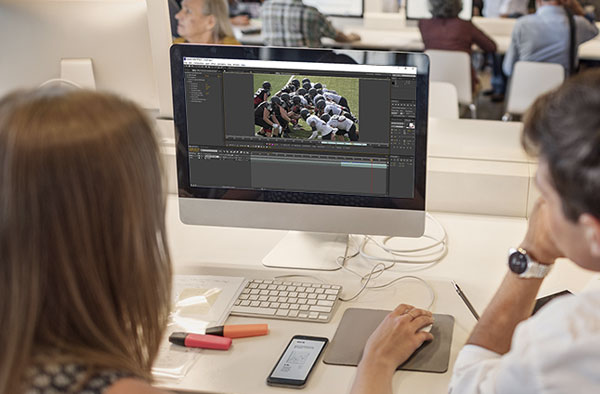Videotaping and editing action sporting events can be an exhilarating experience since you get to see the action firsthand while also ensuring that others get to participate in your pleasure.
Shooting is just half the battle and editing takes a lot of hard work and patience to produce high-quality video content. As a consequence, knowing the finest sports video editing techniques is critical if you want to create high-quality outcomes.

So, without further ado, for editing sports videos, here are top 8 tips that you must incorporate right away.
8 Tips for Impeccable Sports Video Editing
1. Choose the Right Video Editing Tool
Keep in mind that the vast majority of free and paid internet editing tools are feature-rich. As a result, don’t choose the editor based on its capabilities. Most of the time, you won’t be able to accomplish it since you’ll be baffled by the features on offer.
If you’re on a tight budget, a free online video editor might prove to be an excellent option. The tool comes with all the features that you might need while editing your action sports video. Take your time with it and see which features you like most.
2. Keep the Videos Crisp
People’s attention spans have shrunk due to the proliferation of digital media on the Internet. This implies that you must make your video as brief as possible in order to capture their attention. When editing sports videos, it’s okay to allow a little “breathing space” to keep the viewers interested.
You must ensure that the spectator receives something of value from every second of your film. Also, make it a practice to record as much video as possible during sporting events so that you can subsequently exclude the ineffective or boring segments.
3. Use an Intro & Outro
An action sport video’s only aim is to demonstrate to the viewer the specific feats that the athlete is doing. As a result, in order to keep viewers interested, you must arouse an understanding in them via subliminal triggers.
Use Intro and Outro video clips to organically direct the viewer’s attention to the subject matter while starting your sports video editing process. Using the previous example, if you’re making a film showcasing motorcycle stunts, start the video with a still shot of an impressive stunt.
4. Stabilize your Footage
There’s nothing more disorienting than seeing a video that seems to have been filmed during an earthquake unless the method was really utilized. Thus, picture stabilization and hyper smooth were developed to address this issue.
However, there are instances when in-camera stabilization fails miserably. If you’re shooting in low light and the camera algorithm is having trouble identifying the things in the frame, you may get what’s known as the “jello effect.”
As a result, if low light is a concern, avoid using Hypersmooth or any other kind of camera stabilization.
5. Emphasize the Action
In sports videos, no one cares about the challenges the stuntman faced or how he/she trained for the event they’re seeing. They’d rather see the action right now!
This implies that throughout the editing process, you will have to remove any material that isn’t useful, such as lengthy interviews, dialogs, and “ummms” and other grammatical mistakes. Cut an interview down to 8 to 10 seconds long by utilizing subtle audio fades.
6. Add Music to your Videos
Not to mention, adding some enticing music tracks may do wonders for your sport video’s visual appeal. In addition to getting the blood flowing, this hooks the viewers and entices them to watch the remainder of the film to learn more.
Markers should be included in your music as well. To make it more visually appealing, you may sync the video sequences to the precise points in time when the music crescendos or beats.
7. Deploy High FPS for Slow Motion
With slow-motion clips while shooting action sports is a great idea since so many fascinating things happen at such a rapid pace that they can’t be captured using a normal frame rate.
High frame-rate settings are now available on a large number of small consumer and professional electronics products. However, keep in mind that shooting at a high frame rate means you’ll always lose some quality in the final product.
The resolution may be reduced, although this is most often due to a decrease in the bitrate per frame, which results in a loss of information since each picture is compressed more. Recognize the trade-off and make good use of the slow-motion feature.
8. Trim off Extra Action
Poorly done transitions are only noticed by viewers in the same way that poor sound quality is. One of the easiest transitions to make is from one action to the next by cutting on the action.
When the subject is in motion and the viewer’s attention is drawn to it, you may seamlessly transition to the next clip without anybody noticing. An interview participant looking away from the camera or moving in their seat may be considered motion rather than stillness.
Conclusion
We hope that this guide to editing action sports videos was beneficial to you. Practice makes perfect, just as with a sportsperson.
Editing action sports videos requires a certain set of skills that not everyone has. Increasing your chances of getting excellent final results requires a well-thought-out strategy and a toolkit full of tried-and-true techniques.
You’re narrating a narrative that’s made up of a series of incidents and you should keep this in mind while editing action sports footage.

Loves all things female cricket